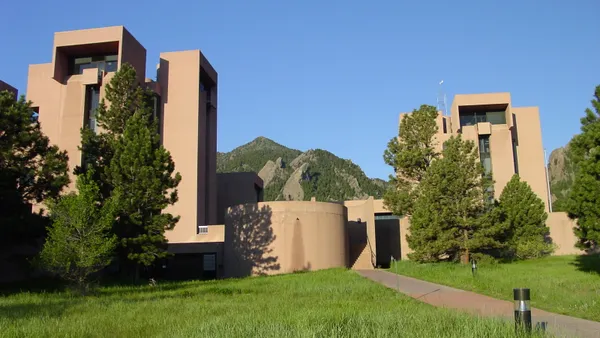Dive Brief:
- The Denver City Council unanimously voted to repeal and replace its green roof law that required rooftop greenery on buildings larger than 25,000 square feet, according to The Denver Post.
- The revised law instead will require light-colored, reflective "cool roofs," and developers can choose one of several new options for meeting environmental goals: build green space into the structure or lot, pay a per-square-foot fee to fund green space or energy-efficiency somewhere else, implement renewable energy or meet standards for an environmental certification program, such as LEED.
- Voters approved the previous green roof law last year.
Dive Insight:
The law changes will affect both new construction and reroofing projects on buildings over 25,000 square feet. The regulations are expected to be more cost effective and achieve a wider array of environmental goals.
Real estate developers fought hard against the original green roof law, indicating it could have added nearly 3% to the cost of constructing large buildings. Plus, research indicates that many existing roofs in Denver couldn't handle the extra weight of adding greenery under the new law, Denverite reports.
While the vegetation on green roofs comes with numerous benefits including rainwater absorption, providing insulation and addressing urban heat islands, cool roofs are also directly effective in urban heat island mitigation. Urban or metropolitan areas on average are several degrees warmer than rural areas because of human activities and modified land surfaces. Incorporating enough light-colored, reflective roofs is said to contribute to lowering an urban area's temperature by several degrees.
Under the new law, developers and building owners will still have to pay more than to create a traditional roof, but the costs are expected to be significantly less than the original law — 20% to 90% less, depending on the structure, with an average of 50% savings.












